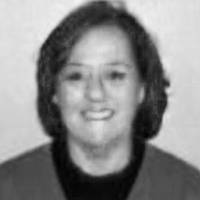Introduction
For decades, researchers have attempted to answer whether or not language "shifts" to the right hemisphere following focal damage to the left hemisphere (Moore & Papanicolaou, 1992; Ogden, 1989). A related question is, how much could the right hemisphere contribute to the recovery from language deficits following stroke (i.e., aphasia) and which areas would be responsible for the increase in functional communication and language capabilities for comprehension and production (Thomas, Altenmuller, Marckmann, Kahrs, & Dichgans, 1997). Research addressing these questions has been inconclusive and controversial.
Many researchers have suggested that following damage to the left hemisphere language shifts to the homologous areas of the right hemisphere (Gold & Kertesz, 2000; Heiss et al., 1999). Evidence of this compensatory strategy has been well documented using various methodologies with regard to language comprehension (for an in-depth review, see Ogburn Yeager & Rubin, 2005).
Moore and Weidner (1975) found a significant left ear advantage (LEA), which indicates right hemisphere dominance, in patients with aphasia. However, the LEA was not apparent until six months post insult, which suggests recovery of function is associated with a shift to the right hemisphere for language processing.
Pettit and Noll (1979) documented a group of aphasic listeners with LEAs, whereas a non-brain damaged control group demonstrated typical right ear advantage (REA). The control group REA was thought to reflect left hemisphere language dominance. However, for the aphasic group, a transfer of hemispheric specialization for language due to the LEA seemed apparent. Moore and Papanicolaou (1988) found significant REAs for a group of non-brain damaged listeners, listeners who had temporary dysarthria due to transient ischemic attack, and listeners who had experienced a right hemisphere stroke. However, they reported a significant LEA for the majority of their aphasic participants (8 out of 11), which they assumed was a result of the right hemisphere's increased contribution.
In a single subject design using PET technology, Gold and Kertesz (2000) found that the right hemisphere along with other areas in the left inferior temporal lobe had come to subserve lexico-semantic processes in an individual with large scale damage to the left hemisphere and subsequent global aphasia. In a semantic-orthographic comparison task, their non-aphasic control subject demonstrated left perisylvian and extrasylvian activation, whereas the patient with global aphasia demonstrated activation in the homologous areas of the right hemisphere. In the individual with aphasia, specific areas activated were the right middle frontal gyrus, superior temporal gyrus, angular gyrus, supramarginal gyrus and the precuneus. Semantic decisions revealed activation of the right inferior and middle temporal gyri, whereas in the control patient, the left superior temporal gyrus was activated. Gold and Kertesz concluded that the improvement in the processing of lexical-semantic information was due to recruitment of right hemispheric regions.
The Role of the Right Hemisphere in Speech Production
July 3, 2006
Share:
Related Courses
1
https://www.speechpathology.com/slp-ceus/course/20q-early-childhood-stuttering-less-8978
20Q: Early Childhood Stuttering: Less-Direct and More-Direct Treatment
The key issues in the treatment of early childhood stuttering, with a focus on less-direct and more-direct treatment approaches are addressed in this course. Ways that clinicians can draw upon various approaches to develop individualized treatment so that each child’s and family’s individual needs are addressed are discussed.
textual, visual
129
USD
Subscription
Unlimited COURSE Access for $129/year
OnlineOnly
SpeechPathology.com
www.speechpathology.com
20Q: Early Childhood Stuttering: Less-Direct and More-Direct Treatment
The key issues in the treatment of early childhood stuttering, with a focus on less-direct and more-direct treatment approaches are addressed in this course. Ways that clinicians can draw upon various approaches to develop individualized treatment so that each child’s and family’s individual needs are addressed are discussed.
8978
Online
PT60M
20Q: Early Childhood Stuttering: Less-Direct and More-Direct Treatment
Presented by J. Scott Yaruss, PhD, CCC-SLP, BCS-F, Nina Reardon-Reeves, MS, CCC-SLP, BCS-F
Course: #8978Level: Intermediate1 Hour
AG Bell - LSLS/1.0 Domain 3; ASHA/0.1 Intermediate, Professional; Calif SLPAB/1.0; IACET/0.1; Kansas LTS-S1370/1.0; SAC/1.0
The key issues in the treatment of early childhood stuttering, with a focus on less-direct and more-direct treatment approaches are addressed in this course. Ways that clinicians can draw upon various approaches to develop individualized treatment so that each child’s and family’s individual needs are addressed are discussed.
2
https://www.speechpathology.com/slp-ceus/course/acceptance-and-commitment-therapy-introduction-10771
Acceptance and Commitment Therapy: An Introduction for SLPs
An introduction to Acceptance and Commitment Therapy (ACT), a modern evidence-based counseling approach, is provided in this course. Research support for ACT is discussed, and case studies to illustrate how ACT techniques can help patients and their families with the psychosocial consequences of living with communication disorders are presented.
auditory, textual, visual
129
USD
Subscription
Unlimited COURSE Access for $129/year
OnlineOnly
SpeechPathology.com
www.speechpathology.com
Acceptance and Commitment Therapy: An Introduction for SLPs
An introduction to Acceptance and Commitment Therapy (ACT), a modern evidence-based counseling approach, is provided in this course. Research support for ACT is discussed, and case studies to illustrate how ACT techniques can help patients and their families with the psychosocial consequences of living with communication disorders are presented.
10771
Online
PT60M
Acceptance and Commitment Therapy: An Introduction for SLPs
Presented by William S. Evans, PhD, CCC-SLP
Course: #10771Level: Intermediate1 Hour
ASHA/0.1 Intermediate, Professional; Calif SLPAB/1.0; IACET/0.1; Kansas LTS-S1370/1.0; SAC/1.0
An introduction to Acceptance and Commitment Therapy (ACT), a modern evidence-based counseling approach, is provided in this course. Research support for ACT is discussed, and case studies to illustrate how ACT techniques can help patients and their families with the psychosocial consequences of living with communication disorders are presented.
3
https://www.speechpathology.com/slp-ceus/course/best-practice-for-assessment-and-9759
Best Practice for Assessment and Treatment of Bilingual Aphasia
This course focuses on best practice in the assessment and treatment of bilingual aphasia by speech-language pathologists. Recommended practices are contrasted against common mistakes made by clinicians working with bilingual patients with aphasia. Implementation of best practices are modeled through case studies.
auditory, textual, visual
129
USD
Subscription
Unlimited COURSE Access for $129/year
OnlineOnly
SpeechPathology.com
www.speechpathology.com
Best Practice for Assessment and Treatment of Bilingual Aphasia
This course focuses on best practice in the assessment and treatment of bilingual aphasia by speech-language pathologists. Recommended practices are contrasted against common mistakes made by clinicians working with bilingual patients with aphasia. Implementation of best practices are modeled through case studies.
9759
Online
PT90M
Best Practice for Assessment and Treatment of Bilingual Aphasia
Presented by Maria Muñoz, PhD, CCC-SLP
Course: #9759Level: Intermediate1.5 Hours
ASHA/0.15 Intermediate, Professional; Calif SLPAB/1.5; IACET/0.2; Kansas LTS-S1370/1.5; SAC/1.5
This course focuses on best practice in the assessment and treatment of bilingual aphasia by speech-language pathologists. Recommended practices are contrasted against common mistakes made by clinicians working with bilingual patients with aphasia. Implementation of best practices are modeled through case studies.
4
https://www.speechpathology.com/slp-ceus/course/supporting-aphasia-recovery-with-therapeutic-11048
Supporting Aphasia Recovery with Therapeutic Games: Putting the "Fun" Back in Functional
People with aphasia need motivating ways to fight social isolation and improve communication. Therapeutic aphasia games can address these needs by making practice more fun and engaging, especially in group contexts. This course reviews existing early-stage aphasia games research. It also describes aphasia rehabilitation and game design principles SLPs can use to develop and adapt their own therapeutic games.
auditory, textual, visual
129
USD
Subscription
Unlimited COURSE Access for $129/year
OnlineOnly
SpeechPathology.com
www.speechpathology.com
Supporting Aphasia Recovery with Therapeutic Games: Putting the "Fun" Back in Functional
People with aphasia need motivating ways to fight social isolation and improve communication. Therapeutic aphasia games can address these needs by making practice more fun and engaging, especially in group contexts. This course reviews existing early-stage aphasia games research. It also describes aphasia rehabilitation and game design principles SLPs can use to develop and adapt their own therapeutic games.
11048
Online
PT60M
Supporting Aphasia Recovery with Therapeutic Games: Putting the "Fun" Back in Functional
Presented by William S. Evans, PhD, CCC-SLP
Course: #11048Level: Advanced1 Hour
ASHA/0.1 Advanced, Professional; Calif SLPAB/1.0; IACET/0.1; Kansas LTS-S1370/1.0; SAC/1.0
People with aphasia need motivating ways to fight social isolation and improve communication. Therapeutic aphasia games can address these needs by making practice more fun and engaging, especially in group contexts. This course reviews existing early-stage aphasia games research. It also describes aphasia rehabilitation and game design principles SLPs can use to develop and adapt their own therapeutic games.
5
https://www.speechpathology.com/slp-ceus/course/20q-mental-health-aphasia-and-10306
20Q: Mental Health, Aphasia, and the SLP’s Role
Depression and other mental health challenges are prevalent in individuals with aphasia. Recent research on the mental health status of individuals with aphasia, along with mental health and well-being screening options and basic counseling approaches that can be used by SLPs, are discussed in this 20Q.
textual, visual
129
USD
Subscription
Unlimited COURSE Access for $129/year
OnlineOnly
SpeechPathology.com
www.speechpathology.com
20Q: Mental Health, Aphasia, and the SLP’s Role
Depression and other mental health challenges are prevalent in individuals with aphasia. Recent research on the mental health status of individuals with aphasia, along with mental health and well-being screening options and basic counseling approaches that can be used by SLPs, are discussed in this 20Q.
10306
Online
PT60M
20Q: Mental Health, Aphasia, and the SLP’s Role
Presented by Rebecca Hunting Pompon, PhD
Course: #10306Level: Intermediate1 Hour
ASHA/0.1 Intermediate, Professional; Calif SLPAB/1.0; IACET/0.1; Kansas LTS-S1370/1.0; SAC/1.0
Depression and other mental health challenges are prevalent in individuals with aphasia. Recent research on the mental health status of individuals with aphasia, along with mental health and well-being screening options and basic counseling approaches that can be used by SLPs, are discussed in this 20Q.


